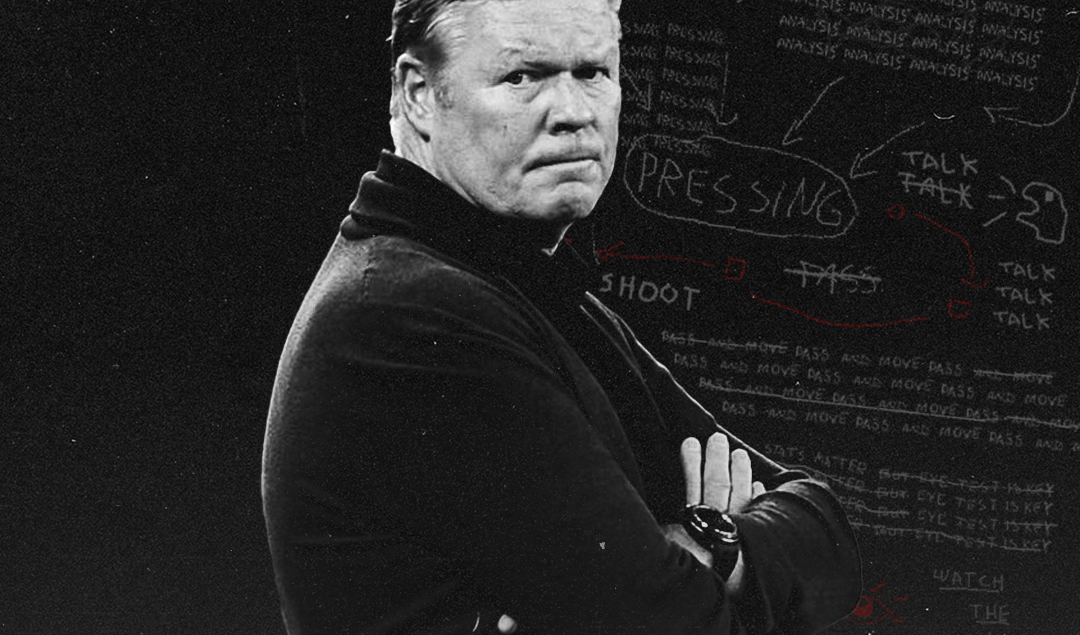How Ronald Koeman Can Shape Up Barcelona This Season
At the beginning of the transfer window, after bringing Memphis Depay in a free transfer from Lyon, Barcelona’s forward line became full of stars. There was a lot of talk about using Lionel Messi, Memphis Depay and Antoine Griezmann in which formation Ronald Koeman would form his lineup. But what happened instead of all the expectations?
Messi was the main victim in the La Liga CVC deal, the board was forced to fix the salary structure and release their best player Messi for free. The Argentine joined Paris Saint-Germain on a free transfer. Barcelona also loaned Griezmann to Atletico Madrid just before the deadline, bringing Luuk de Jong on loan at the request of Koeman, who hardly got the opportunity to play for his former club Sevilla.
Ousmane Dembele was injured in the middle of the Euros, so he will miss a vast amount of the matches in the season too, this is the same case for the new coming forward Sergio Aguero and Danish forward Martin Braithwaite. Although Philippe Coutinho has returned after a long injury, he has yet to get a chance, and Ansu Fati is also waiting to return after a long injury. So Barca’s star-studded forward line has now turned into a nightmare.
For midfield, Koeman wanted to place a physical midfielder. Barcelona have not been able to find anyone in this position since the departure of Ilaix Moriba. There is absolutely no shortage of footballers in Barcelona’s midfield, but there is a great lack of variation in midfield where almost all midfielders are central midfielders. No one provides the speed or physicality that is most needed for a team’s midfield line right now.
There is no new face in the defense line except Eric Garcia. Young right back Emerson Royal who was bought from Betis but sold to Tottenham in the same window. So Koeman has to face many challenges to organize the team. Today we will try to discuss with the current squad of Barcelona and what common formations Koeman can operate in and in which formation the role of the players will be.
4-3-3 Formation
So far Koeman has operated the team in a 4-3-3 formation in the first three league matches.The 4-3-3 formation is supposed to be the most effective in Barcelona’s approach to the game, yet there are three significant flaws with it. The biggest problem is there is no variation in the midfield and thus Barcelona has no physical midfielder right now.
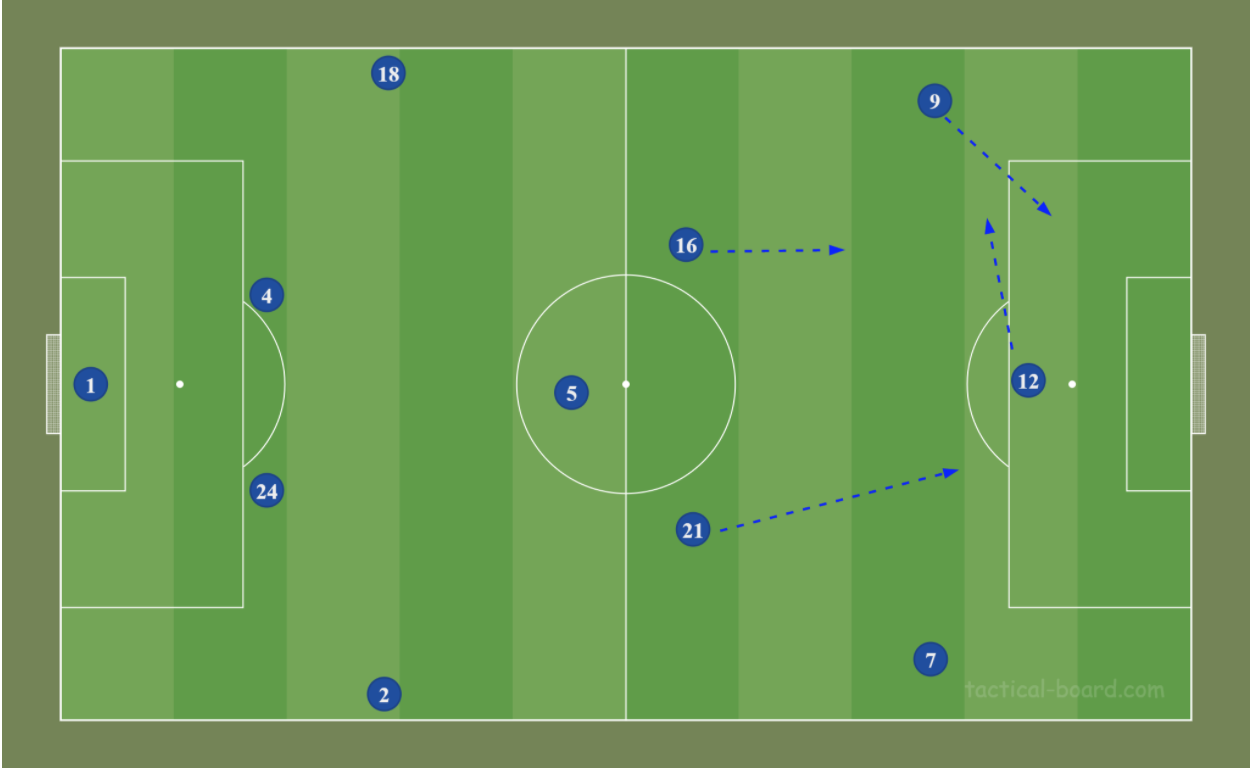
Sergio Busquets, Frenkie de Jong and Pedri all are good at press resistance, but they lack the ability to keep the ball by neutralizing the opponent’s physical pressure. That’s why, when teams are playing with high intensity, the midfield line completely vanishes, as seen most recently in the San Mames encounter against Athletic Bilbao.
The second issue is usually full-backs in a 4-3-3 formation must be active both defensively and offensively. Jordi Alba and Sergiño Dest, Barca’s two fullbacks, are both offensively strong, but they can’t drop back on defense quickly enough after losing ball possession on the high line.
There is also no midfielder who can perform the role of an anchorman, and Busquets is too slow to operate as a defensive midfielder. As a result, when Barcelona is quickly switching from offensive to defensive transition, opponents can easily exploit free spaces.
Another problem is that the squad lacks a speedy winger who can stretch the line with the position on the touchline (even if Dembele is here, he is very injury-prone and misses many matches). In the opponent’s third, there is no target man who can hold the forward line.
As a result, the gap between the midfield and forward lines has narrowed significantly, and the passing zone gets much narrower. Also, because there is no specific target man, most forward players are seen passing aimlessly around the final third rather than trying to reach the box.
If Barcelona plays in the 4-3-3 formation, a possible defensive line is Dest-Garcia-Araujo-Alba. As Ronald Araujo and Eric Garcia are both right-footed center-backs, there may be some difficulty progressing the ball against high block pressing during the buildup. As a solution, Busquets should be dropped to the defensive line, where he can help to progress the ball.
In the midfield, De Jong, Pedri and Busquets are automatic choices. When Brathwaite/Luuk De Jong opens the center channel by dragging the opponent’s defenders into the wide area, Frenkie’s role should be to try to operate in the space. Memphis, Brathwaite, and Dembele will form the forward line(after recovering from injury).
Memphis tries to take shots by cutting the box after Pedri or Alba make quick one-two passes. Alba will stretch the left flank at this time. During this time, Dembele will stretch the line on the right side, and Frenkie De Jong will try to enter the box through the gap in the right half-space and will try to make the final attempt.
Dest will then move to the center of the pitch to cover Frenkie’s space in the midfield. As a result, even if they lose possession, it will be very difficult for the opponents to progress the ball quickly by exploiting free spaces.
3-5-2 Formation
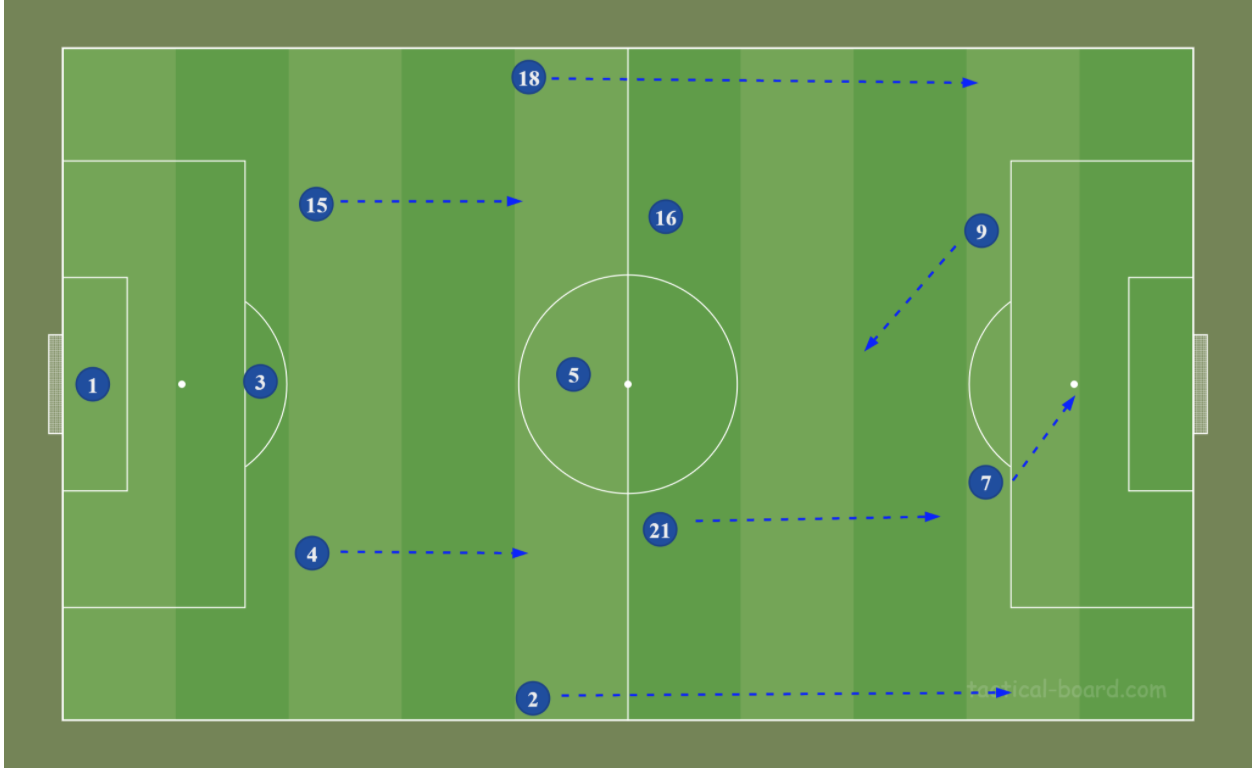
Last season, Barcelona did quite well with this formation. Most of the time, Messi-Frenkie was at the forefront of creating final goal-scoring opportunities. Messi moved from his line to the midfield, creating space between the opposition defensive line. Frenkie would then move towards the front line and take his position as a pseudo striker in the space created by Messi.
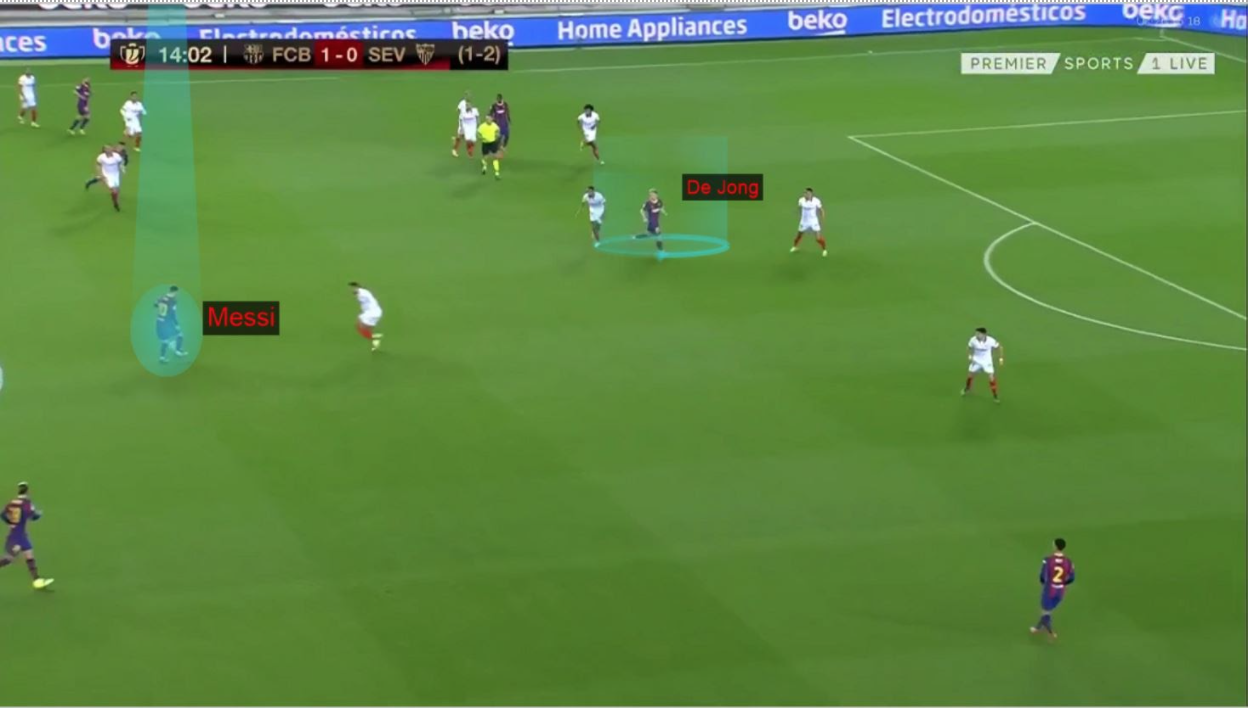
Messi made long through balls into the box from midfield or made quick one-two passes with Frenkie near the box, trying to cut into the box by dribbling and making an attempt. There is no creative footballer in the current Barcelona squad who has the ability to create high Shot Creating Actions like Messi.
Coutinho can play in this position, although his dribbling success percentage is significantly lower than Messi. This season, there is also no dependable target man to hold the line. As a result, playing in the 3-5-2 formation this time has a significant possibility of backfiring.
In this formation, however, it is possible to get the best output from the defense. Alba and Dest will have more attacking flexibility in this formation, and the lack of creativity created by Messi’s absence will be more than compensated for by Alba and Dest’s improved offensive engagement.
As for the back three, I’d go with Araujo, Gerard Pique and Clément Lenglet. Because a three-man backline requires at least one left/both-footed center back, there is no option to play as a left center back without Lenglet. Furthermore, Lenglet was a solid performer in the three-man back last season.
Busquets, Frenkie, and Pedri make up the midfield line as usual. Busquets will have more attacking freedom in this situation because the back three will provide defensive support to him. That’s why we saw the Messi-Frenkie link up last season, but in this season Busquets-Frenkie linkup may have been seen in this formation. Memphis and Dembele are the forward-line options. On paper, the formation is 3-5-2, but in the field, it looks quite a bit like the 3-4-3 diamond.
Dembele will have to play the role of the main creative player who is on top of the Diamond. He has the potential to perform in this role if he can improve his unnecessary possession losses and decision-making. Memphis’s role off the ball will be to create space by drifting to the left from the center area and dragging his marker through himself to create a gap between the center-backs for Frenkie to exploit that free space through the center channel, as well as dropping deep from his line to make room for Alba in the wide area.
Memphis will create a triangle with Pedri and Frenkie on the ball, make quick passes, and create space for Dembele/Dest, Barcelona’s attacking pattern will be much like this. During the defensive transition, Pique will act as the last man in the defensive line. Araujo and Lenglet will move high up on their line and try to anticipate the ball from the opponent aggressively.
When Araujo or Lenglet tries to anticipate the ball on the high line, the other two center-backs will cover the center region and try to slow down the opponent’s quick forward progress so Alba and Dest can fall back into the defensive zone and organize the defensive line.
3-4-3 Formation
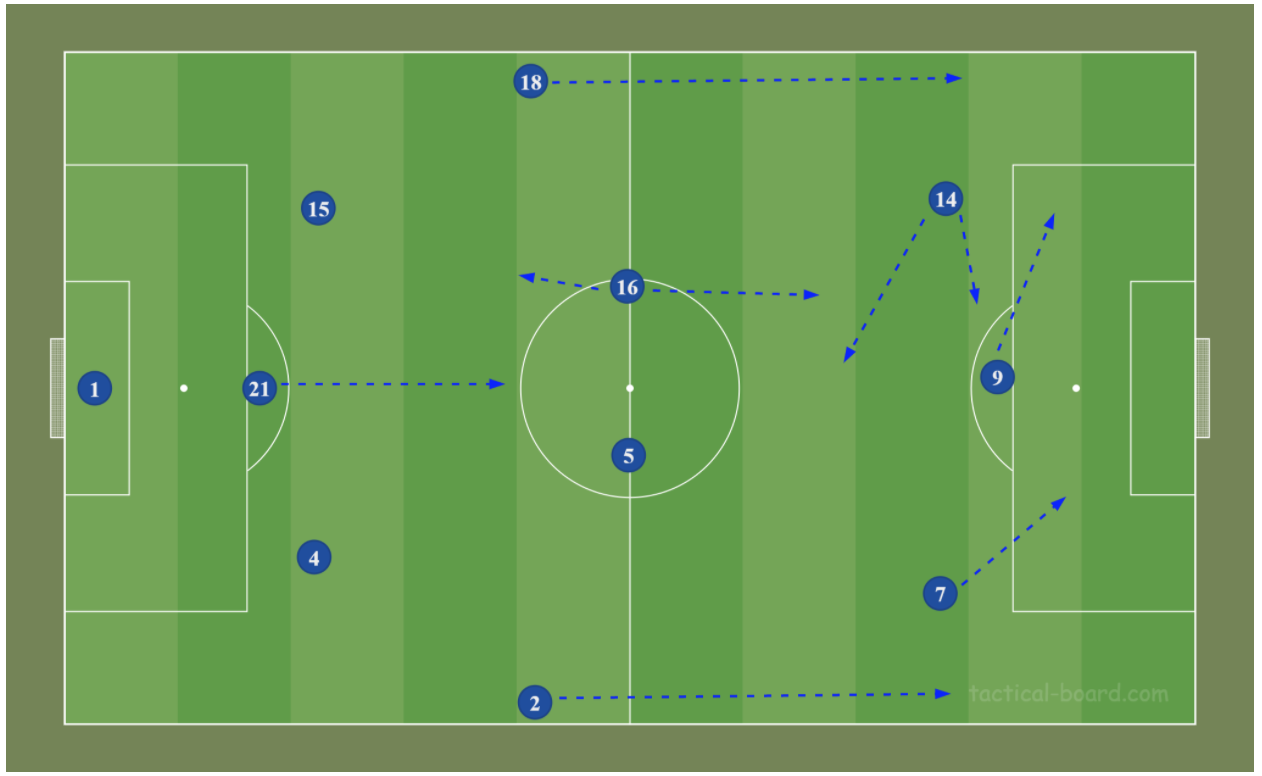
With Barcelona’s current squad’s resources, playing in a 3-4-3 system is nearly impossible. So it may seem like why I am talking about this formation. However, the best feasible formation with this team will be 3-4-3 if Koeman alters some specific roles.
One of the biggest weaknesses in Barcelona’s backline since the start of Pique’s declining period is the lack of a solid ball progressing center back. When the opponent presses with the high block pressing line, the center-backs can neither neutralize the pressing by enlarging the passing zone nor move forward by holding the ball and progressing forward.
If we look at the miserable losses of the last few seasons in the Champions League, the opposing forwards had easily isolated Barca’s defenders by pressing with high intensity, so they had not been able to progress the ball at all, which also affected the defending too, the defense line got collapsed very easily for being vulnerable against opponents high pressing. The only solution to avoid such situations is to keep a solid ball progressor in the backline.
Under pressure, Frenkie De Jong is currently one of the best ball progressors. According to last season’s stats, Frenkie progressed the ball 9.52 times per 90, among these only 0.99 had been disposed of, which is quite impressive. That’s why, in a 3-4-3 formation, I would want him to play the ball progressive role in the three-man backline.
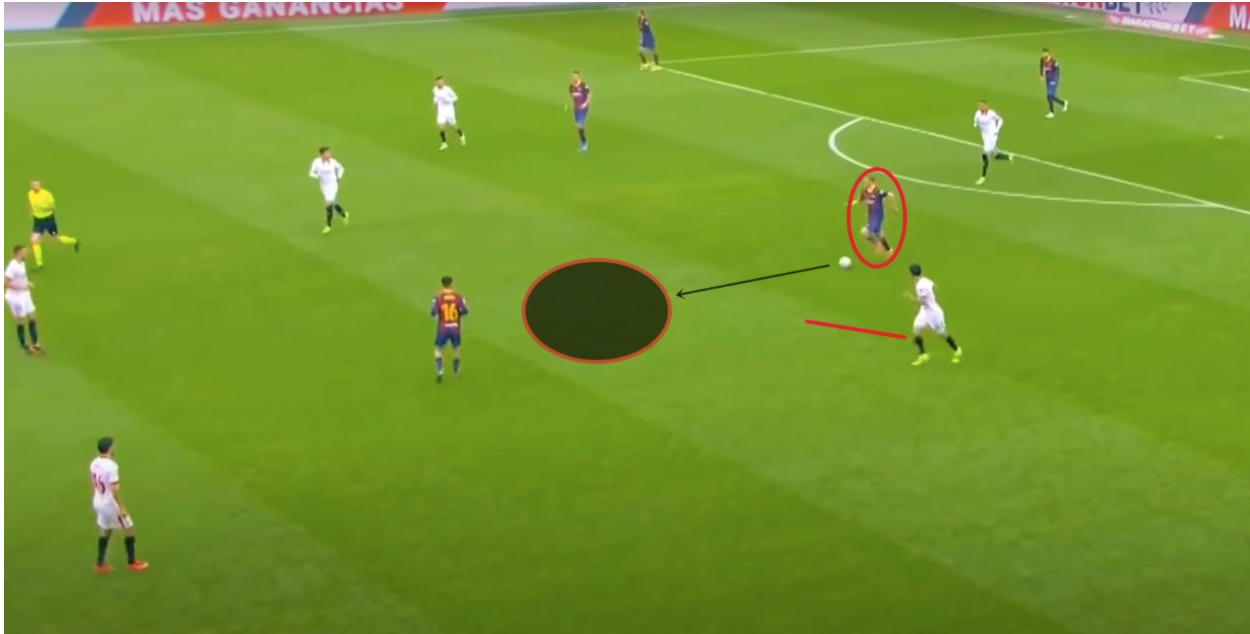
In the above frame as Frenkie was progressing the ball forward from the defensive third, the opponent’s midfielder started to press him directly.
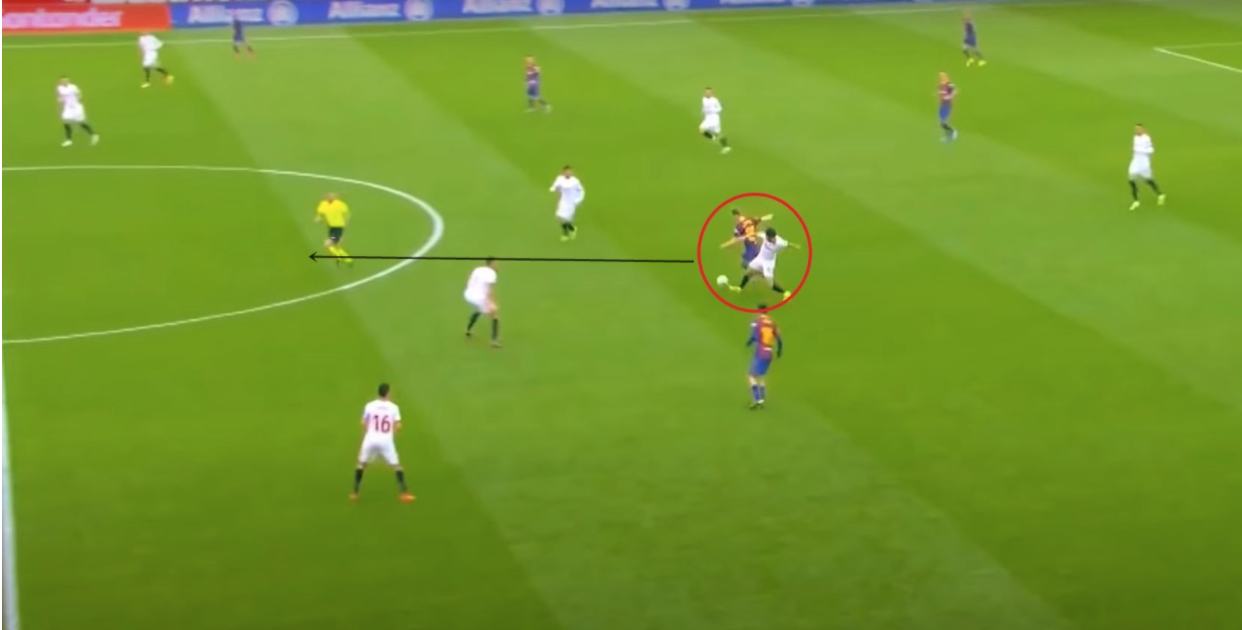
Frenkie’s agility and press resistivity allowed him to beat his opponents’ entire mid-block pressing line. Dembele, in the meantime, made a run behind the defense. Frenkie then targeted Dembele and delivered a diagonal through ball.
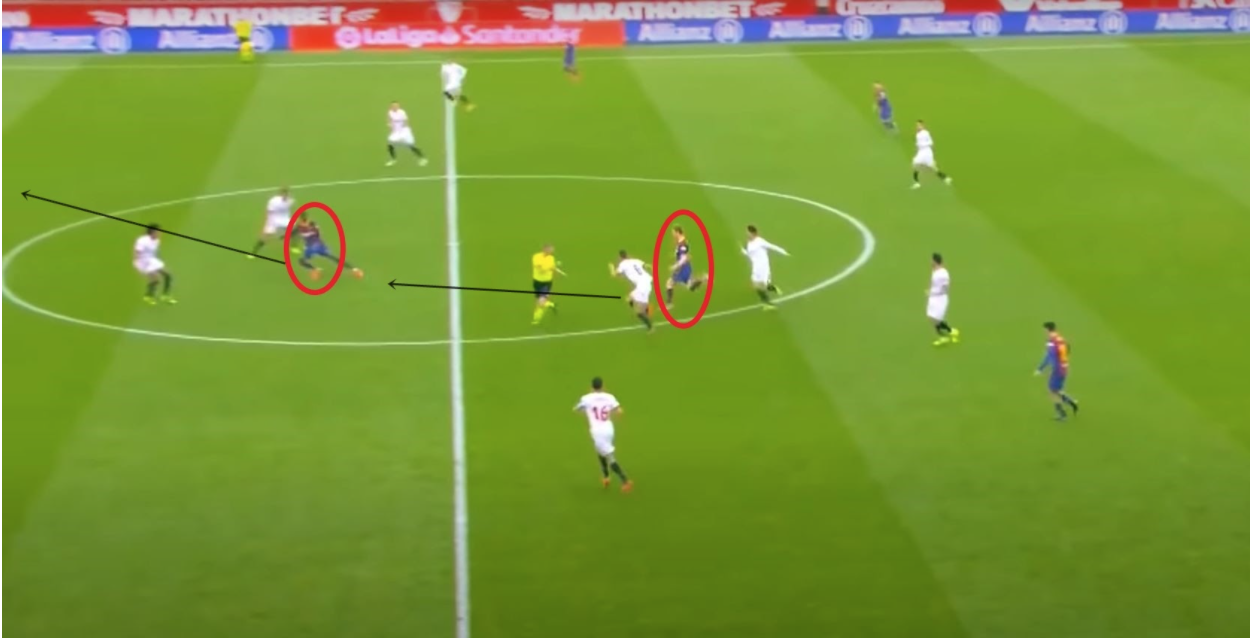
The two wide center-backs will be Araujo and Lenglet. Araujo will cover Frenkie when he carries the ball forward. Because Óscar Mingueza is a kind of defender who loves to move forward, there is a good probability that the entire defensive line will be exposed if Frankie and Mingueza are both playing as center-back at the same time. So, Frenkie and Mingueza should not be played as center-back at the same time.
Barcelona’s biggest problem after Messi leaves will be lack of creativity in the final third. Because there is no one in Barcelona’s current lineup like Messi who can break the opponent’s defense. Barca’s midfielders are undoubtedly excellent ball controllers, but their productivity is quite low. Two wing-backs Dest and Alba may be a good option to overcome this lack of creativity.
They will get more offensive freedom as their defensive role is decreased. There is no need for a touchline winger in a 3-4-3 system (line stretching is normally done by the wing-backs); because there is an extra man in the opponent’s box, they are more likely to score from crosses or through balls from the wing-backs.
One of the two midfielders acts as a deep-lying playmaker in the 3-4-3 system, distributing the ball most of the time. Busquets is a natural fit for this position. The other midfielder’s duty is to cover the entire midfield area with his physicality and high workload while also attempting to anticipate the opponent’s play by pressing hard.
Because Barcelona lacks a physical midfielder, anyone trying to fill this job will find it extremely tough. Pedri was the footballer who covered the most areas per 90 in the recently ended Euro 2020, and his work rate is quite outstanding, so he may be able to sustain this role. Barcelona’s biggest problem, according to the 3-4-3 formation, may be a lack of a man in the midfield.
According to Barca’s play style, numerical superiority in the midfield is crucial. Frenkie will have to go up to midfield in such a case to assist in gaining numerical superiority, 3-4-3 formation will then be changed to 4-3-3. This formation allows Frenkie to display off his versatility to its fullest.
Let’s talk about the forward line for a moment. The inside forward or inverted winger basically operates the halfspace in the 3-4-3 system, with one center forward holding the opponent’s defensive line. Memphis is my first option as a target man in this lineup, with Coutinho and Yusuf Demir as halfspace operators (at least Demir could be playing in this position until Dembele is back).
The three forward players will frequently switch positions and, if required, drop into midfield to help gain numerical superiority. The player in the halfspace will drag the opponent’s fullback towards himself, freeing up space for Alba/Dest to cut into the box and create goal-scoring opportunities with low crosses.
With Messi’s departure, the Barcelona squad’s weaknesses have become increasingly apparent. To compensate for Messi’s absence, the entire squad must play as a unit. Last season, Koeman showed a lot of weakness in reading games. To become successful this season, Koeman’s game reading must be improved, as well as the roles of the players in transitions must be clarified.
By: Amartya Das Dip/@amartyadasdip
Featured Image: @GabFoligno / Juan Manuel Serrano Arce / Getty Images
